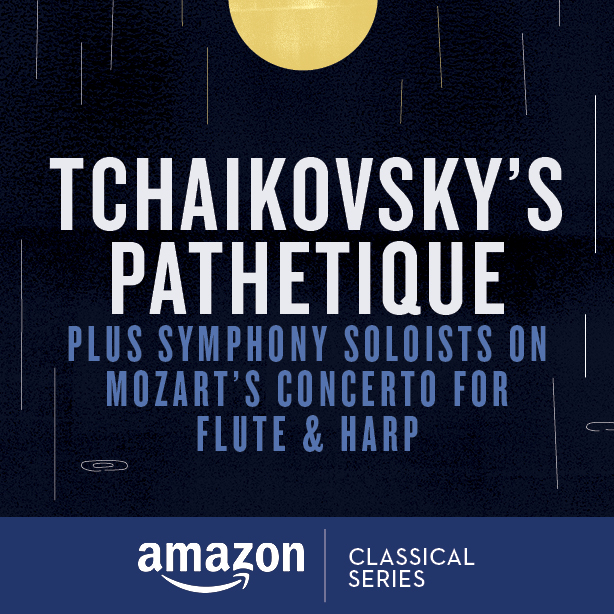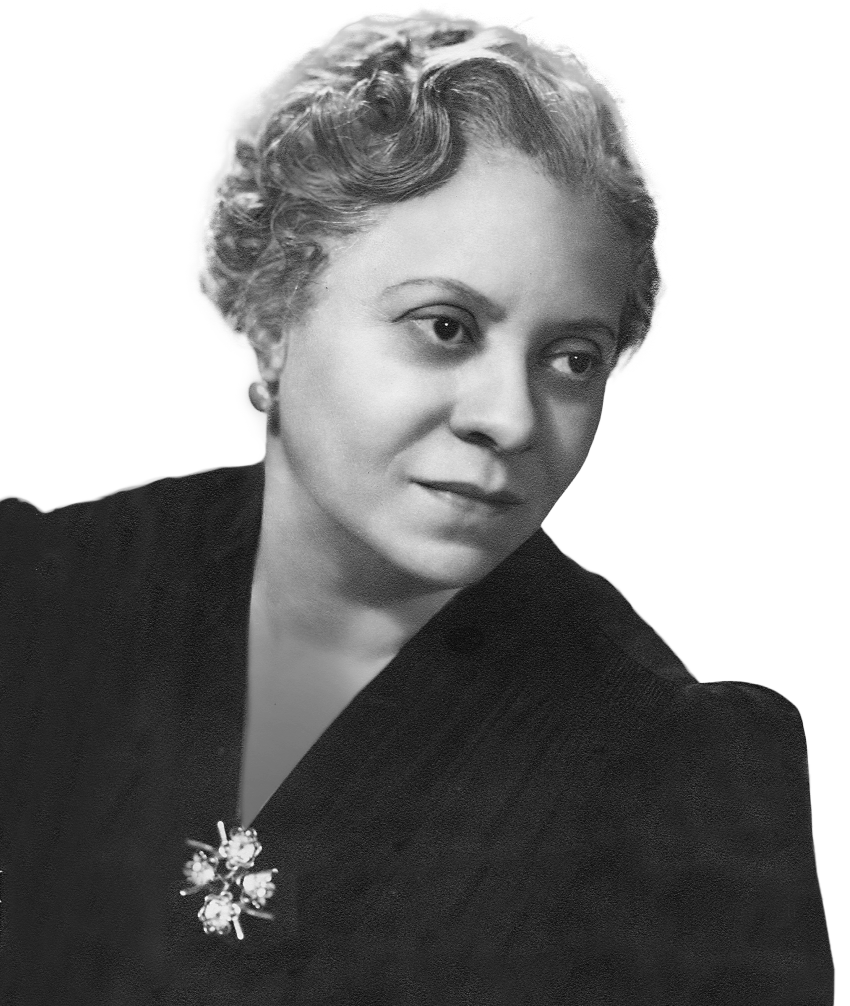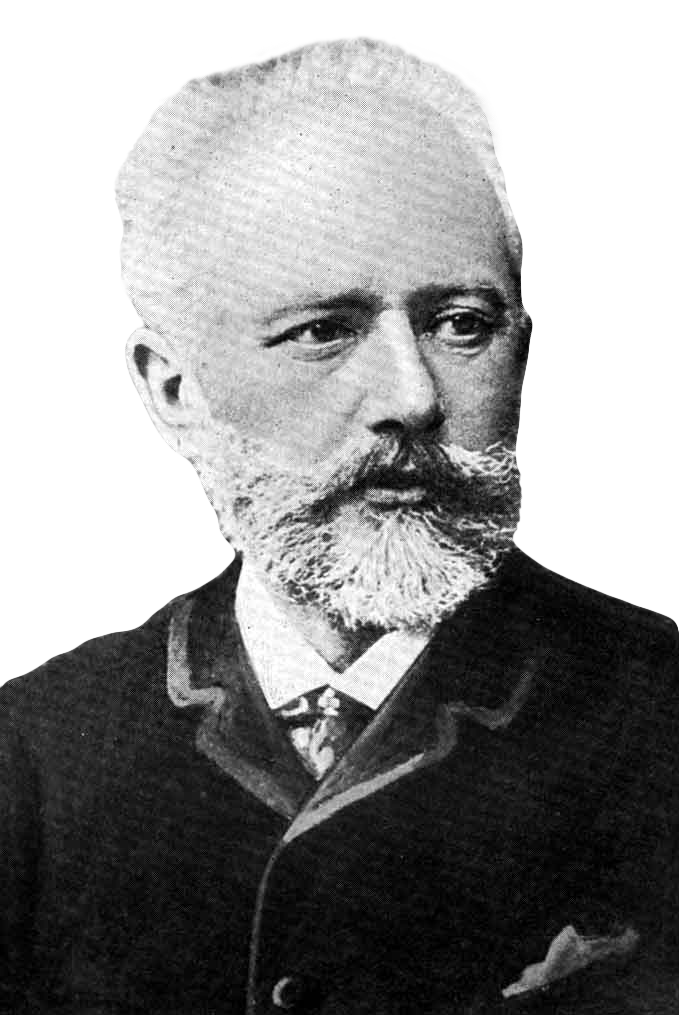
TCHAIKOVSKY’S ‘PATHÉTIQUE’
Thursday, January 20,2022 | 07:00 PM
Friday, January 21,2022 | 08:00 PM
Saturday, January 22,2022 | 08:00 PM
Schermerhorn Symphony Center
NASHVILLE SYMPHONY
Giancarlo Guerrero, conductor
Érik Gratton, flute
Licia Jaskunas, harp
PROGRAM
PRICE
Dances in the Canebrakes
MOZART
Concerto for Flute and Harp
I . Allegro
II. Andantino
III. Rondo: Allegro
TCHAIKOVSKY
Symphony No. 6 in B Minor, “Pathétique”
I. Adagio - Allegro non troppo
II. Allegro con grazia
III. Allegro molto vivace
IV. Finale: Adagio lamentoso
Next week marks the 266th birthday of Mozart — he was born two decades before the Declaration of Independence — and the Nashville Symphony pays tribute by performing one of the most charming and beguilingly beautiful compositions, the Concerto for Flute and Harp. It was commissioned during a particularly stressful and disappointing period of his life, when the 22-year-old composer was trying to stake out his career in Paris — with no lasting success, as it turned out. The fact that Mozart could produce such galant and exquisitely poised music under the circumstances opens up the intriguing question of the extent to which an artist’s concurrent life experiences shape the artwork.
Tchaikovsky wrote his Symphony in B minor near the very end of his career and died just a little over a week after conducting its premiere. Of the Sixth, which is known by the epithet “Pathétique,” he remarked that “without exaggeration, I have put my entire soul into this symphony.” On the surface, at least, this would seem to highlight one of the fundamental differences between the Classical and Romantic outlooks: a carefully balanced “objectivity” in the Mozart versus confessional intensity and subjective passion in the Tchaikovsky. Yet music is not so easily explained or distilled. A passionate personality emerges in the transportive slow movement of Mozart’s concerto, while Tchaikovsky — who idolized Mozart— upends formal expectations of the symphony to introduce irony and ambiguity: the “Pathétique” is no mere self-portrait of a tormented artist.
Our concert opens with the work of an American composer whose (re)discovery has long been overdue. Florence Price pressed on with her art despite facing obstacles as both a woman and person of color. We hear music from the end of her career, originally written for solo piano and orchestrated posthumously by William Grant Still. Dances in the Canebrakes draws from African American folk idioms and ragtime models, transforming these inspirations into a multifaceted suite.
 |
|
FLORENCE BEATRICE PRICE |
|
|
Born on April 9, 1887, in Little Rock, Arkansas; |
|
|
Composed: 1953 |
Estimated length: |
|
First Nashville Symphony performance: These are the first Nashville Symphony performances of this work. |
|
Florence Price produced not only symphonies, concertos, and other orchestral works but chamber compositions and many pieces for solo piano and organ, and choral music. She was a prolific composer of art songs as well and made arresting arrangements of spirituals. Yet a vast portion of her music remained unpublished, languishing in neglect after her death at the age of 66. Racism and gender inequality had made this extraordinarily accomplished artist into what the musicologist Rae Linda Brown calls an “Invisible Woman” in The Heart of a Woman, the first-ever biography of the composer.
Born Florence Beatrice Smith in the Reconstruction South of 1887, she studied organ, piano, and composition at the New England Conservatory in Boston. Years later, Price never received a response when she sent her music to the attention of the Boston Symphony’s music director, Serge Koussevitzky, a major gatekeeper of the new music scene.
In 1927, during the Great Migration, Price resettled in Chicago and lived there until she died in 1953, the year she wrote Dances in the Canebrakes as a suite for solo piano. Her contemporary William Grant Still, Jr., another prominent African American composer overdue for rediscovery, orchestrated the pieces posthumously.
This was a rare effort at preserving her name, which otherwise was soon allowed to be forgotten — even though Price had become “the most widely known African American woman composer from the 1930s to her death in 1953,” as Brown puts it. No music by a Black woman had ever been played by a leading American orchestra before the Chicago Symphony, led by the conductor Frederick Stock, premiered her First Symphony in 1933.
WHAT TO LISTEN FOR
Dances in the Canebrakes comprises three beautifully proportioned treatments of what Price described as “authentic Negro rhythms.” All three pieces include a contrasting middle section. Price overlays a distinctive harmonic voice on her folk material, giving characterful titles to each piece. “Canebrakes” refer to the dense thickets of sugarcane in the Deep South that slaves were ordered to work — and that also served at times as a place of refuge for escaped slaves.
Nimble Feet plays with the kind of rhythmic syncopation Scott Joplin explored around the turn of the century in his pioneering ragtime piano compositions. A slower, more inward-looking mood dominates in Tropical Noon, with its slow-drag and tango rhythms. The fancy attire evoked by Silk Hat and Walking Cane alludes to what Brown calls “the grace and spirit of the cakewalk, a favorite antebellum dance” in which couples “pranced around in high-step, each couple hoping to win the coveted prize cake.” According to Vanderbilt-based musicologist Douglas Shadle, an authority on the composer, Price is “the culmination of the African-American intellectual stream that followed in Dvořák’s footsteps.”
Scored for 2 flutes and piccolo, 2 oboes, 2 clarinets and bass clarinet, 2 bassoons, alto saxophone, 3 horns, 3 trumpets, 2 trombones, timpani, percussion, harp and strings
 |
|
WOLFGANG AMADEUS MOZART |
|
|
Born on January 27, 1756, in Salzburg, Austria; |
|
|
Composed: 1778 |
Estimated length: |
|
First Nashville Symphony performance: April 4, 2007, conducted by Klaus-Peter Seibel at Schermerhorn Symphony Center. |
|
“Wolfgang is extremely busy and … so well known here and popular that it is hard to describe,” Maria Anna Mozart wrote to her husband Leopold in April 1778, reporting on their son’s progress in Paris. This turned out to be something of an over-optimistic account: in fact, Mozart’s trip to the French capital would end in failure.
In September 1777, the composer had left an unfulfilling job at the court of his native Salzburg, undertaking an extensive journey across Western Europe that lasted until January 1779. His goal was to find a position more suited to his talents and interests. Ultimately, despite some significant creative achievements and inspiring connections, Mozart was unable to land the breakthrough post he had hoped for. Dejected, he headed back to Salzburg, where he was compelled to work again in the court orchestra under his hated patron there.
The Paris chapter of this epic quest lasted from March to September 1778 and proved to be not only disheartening but tragic, for Maria Anna became ill with typhus and died in their Paris lodgings in early July. She had accompanied Wolfgang while Leopold remained at home to carry on with his duties as deputy Kapellmeister (or else risk being fired). Only 22 at the time, Mozart had to inform his father of the terrible news that his beloved Anna Maria’s life “went out like a light.”
Although Mozart did have some good contacts in Paris, not much came of them, and he expressed distaste of a city he found dirty and rude, complaining of Parisian “arrogance” and “self-importance.” Certainly his dealings with Adrien-Louis de Bonnières, a general, diplomat, and aristocrat known as the duc de Guînes, must have intensified Mozart’s loathing. But we can thank the Duke for ensuring that the Concerto for Flute and Harp came into the world — and then vicariously feel something of the composer’s indignation when he complained to Leopold that he was still waiting to be paid by de Guînes. In the end, Mozart seems to have been given an insulting offer of half the fee agreed on, which he refused in protest.
De Guînes was, however, a talented flutist, according to Mozart himself, and his eldest daughter, Marie-Louise-Philippine, played the harp “magnificently,” he wrote to Leopold. (On the other hand, Mozart mocked her lack of skill when he was hired to give her composition lessons.) Hence the request for a concerto that would highlight both musicians. Otherwise, Mozart claimed that the flute was “an instrument that I cannot bear” — unlike his adored clarinet.
His fondness for the harp was similarly limited — this is Mozart’s only composition for that instrument. For all its rich and storied tradition, in fact, the harp was not a part of the standard Classical orchestra and would really only come into vogue in concert music in the 19th century.
Mozart’s prolific catalogue of works includes very few concertos for more than two soloists besides K. 299. Shortly after returning to Salzburg in 1779, he produced another work featuring a duo of soloists: the famous Sinfonia Concertante in E-flat major for solo violin and viola, using a format that was then highly popular in Paris. Joseph Boulogne, the Chevalier de Saint-Georges, who was the son of an aristocrat and an enslaved woman from Guadeloupe, was an acclaimed contemporary who helped bring the sinfonia concertante genre to prominence and arguably influenced Mozart. (They even briefly lived under the same roof just after the death of Mozart’s mother.)
Whatever Mozart felt about the flute and the harp, this concerto combining both stands out as a composition of irresistible beauty and charm. No wonder that it has remained a cherished part of the repertoire for these instruments.
WHAT TO LISTEN FOR
Mozart faced the challenge of balancing two relatively “delicate” instruments with the power of an orchestra — accordingly, the ensemble is reduced to a chamber orchestra of pairs of oboes and horns along with the strings. The spotlight alternates between the soloists, who create a special sound world in themselves, and the reduced orchestra.
This is most obvious in the opening minutes, as the orchestra by itself first introduces the main ideas (note the careful contrast of loud and soft phrasing). After this, the soloists come in with their version of the same. It’s all standard Classical concerto format, but Mozart evolves themes that suit the combo particularly well. He does, however, tend to write more “pianistically” for the harp part — that is, emphasizing patterns of four or eight notes. Each movement is allotted a cadenza for the two instruments, where the orchestra remains completely silent. Mozart did not write these parts out, so the performers have a choice of performing cadenzas published by other musicians or supplying their own.
The Andantino, which shifts to F major, omits even the oboes and horns but divides the violas into two separate lines, creating an intimate and radiant sound picture. The movement unfolds as a series of dreamily spun variations on a beatific theme — the flute and harp comprising a kind of super-Orpheus, empowered by his musical beauty to enchant the most aggressive forces. Some hear an anticipation of Mozart’s later operatic style in this music, surrounded by the more impersonal galant style of his earlier years in the outer movements.
Concluding the Concerto is a series of episodes connected by the repeating dancelike spirit of the main theme. Mozart uses the French term, rondeau, for this procedure. Here, the cadenza is placed just before its last recurrence, and the Concerto ends with chords emphasizing its bright C major tonality.
Scored for 2 oboes, 2 horns and strings plus solo harp and flute.
 |
|
PYOTR ILYICH TCHAIKOVSKY |
|
|
Born on May 7, 1840, in Votkinsk, Russia; |
|
|
Composed: 1893 |
Estimated length: |
|
First performance: October 28, 1893, in Saint Petersburg, with the composer conducting |
|
|
First Nashville Symphony performance: February 21, 1956, with Guy Taylor conducting at War Memorial Auditorium. |
|
“The popular notion that the Sixth Symphony is rife with confession warrants challenge, as does the idea, worthy of Hollywood, that it predicts the composer’s death,” writes the biographer Roland John Wiley. As with the early death of the pioneering genius of computer science and cryptanalysis, Alan Turing, questions continue to proliferate about the cause. Did an accidental drink of cholera-contaminated water kill Tchaikovsky, or did the “scandal” of his same-sex affairs result in the composer’s submitting to a kind of Socratic suicide to preserve a code of “honor” among his associates? (This sensationalist interpretation has been largely debunked.)
The point is that the emotional power of this music continues to tempt us to construct a narrative to “explain” it. Quite possibly for that very reason, Tchaikovsky became ambivalent about program music, which had been championed by his early mentors and the Russian nationalists as an antidote to the sterile “formalism” of Western music. Tchaikovsky had already written his share of narrative-driven pieces. At one extreme are the Fourth Symphony, for which Tchaikovsky supplied an elaborate program centered on the idea of Fate, and his unnumbered Manfred Symphony of 1885, a treatment of Lord Byron’s poetic drama and its Faustian hero.
Something far less overt, or perhaps more mysterious, occurs in the Sixth Symphony. Tchaikovsky developed a “private,” unpublished program for this music but refused to divulge it, teasing with the provocative subtitle as the work was still in progress of “Program Symphony.” The esoteric and unpublished program for the Sixth, which was composed between February and August 1893, has kept generations of scholars and fans busy with attempts to decipher its internal musical codes. Tchaikovsky dedicated the score to “Bob” Davidov — his nephew, with whom he became increasingly obsessed during his final decade.
According to one of the many legends that surround this score, the composer’s brother Modest suggested the French title “Pathétique,” which connotes “impassioned suffering” in its Russian context. Tchaikovsky’s sudden death just a little over a week after he conducted the world premiere in October 1893 made that title seem uncannily well-suited to the impression of intense psychological devastation that the Sixth traces.
The Israeli musicologist Marina Ritzarev follows a very different line of argument in her book Tchaikovsky’s Pathétique and Russian Culture. In her analysis, the conventional view of the Sixth as a personal, subjective lamentation clashes with the composer’s aesthetic and ethical sensibility. The actual “program,” Ritzarev argues, has to do with a more traditional, religious sense of “Passion” (and compassion) from European culture. “The image that might have served as the source of inspiration for Tchaikovsky’s masterpiece,” she writes, “was that of Jesus Christ, his life and death, transformed into a general imagery of the Passion.”
WHAT TO LISTEN FOR
The lengthy first movement establishes an emotional space dominated by despair from the outset — consolation enters as contrast or possible delusion. Tchaikovsky employs his brilliance as an orchestrator using relatively conventional forces: brass chorales evoke apocalypse, while tender memories are highlighted by sensitive woodwind solos. Tempestuous string scales fulminate with a nervous energy that verges on terror. But the climaxes avoid predictability: in the middle of this movement, an exaggerated silence (marked pppppp in the score for emphasis) shocks even more than an explosion of sound would.
One interpretive challenge in performance is to establish coherence between what seem to be sharply disparate sections: note the dead pause preceding the deliriously lyrical second theme (which was inspired by a moment from one of the fate-obsessed Tchaikovsky’s favorite operas, the “Flower Song” that Don José sings in Carmen).
Two inner movements that contrast in character turn out to be interludes rather than long-range shifts of direction. The second movement’s flowing, dance-like charm is subtly inflected through Tchaikovsky’s use of 5/4 meter. This parceling of time units manages to sound graceful rather than hobbled, but it gives the familiar pattern of the waltz an uneasy edge. In the third movement, Tchaikovsky presents a blazing but hollowly triumphant march, emblazoned by victorious brass that revels in aggressively swaggering rhythms. The march’s resounding final proclamation enacts a famous “false” stop. The Sixth’s ultimate pathos comes in the fact that there is “more to come.”
It has frequently been noted that had Tchaikovsky merely switched the order of the final two movements, he would have preserved the optimistic, Beethovenian model of light triumphing over darkness. Yet by reversing that model and concluding with the nihilistic, dying fall of a “lamenting” Adagio (the Sixth began with an Adagio as well), a radically new concept of the symphonic journey is introduced. Mahler’s Ninth would later adopt a similar strategy. The valedictory plunge into silence from a sustained B minor chord deep in the strings sets the stage for a new century of bleak requiems — and confessions that conceal more than they declare, all the way to the grave.
Scored for 3 flutes (3rd doubling piccolo), 2 oboes, 2 clarinets, bass clarinet, 2 bassoons, 4 horns, 2 trumpets, 3 trombones, tuba, timpani, percussion (bass drum, cymbals and tam-tam) and strings
— Thomas May is the Nashville Symphony’s program annotator.